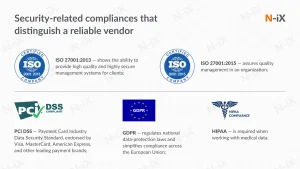Beyond the Gut Feeling: How AI-Driven Decision-Making is Reshaping Management

Let’s be honest. For decades, the corner office has run on a potent mix of experience, intuition, and, let’s face it, a fair amount of guesswork. That “gut feeling” was the secret sauce. But in today’s whirlwind of data, that old recipe just doesn’t cut it anymore. The game has changed.
Enter AI-driven decision-making. This isn’t about replacing managers with cold, unfeeling robots. Far from it. It’s about augmenting human intelligence with machine intelligence. Think of it as giving a seasoned captain the most advanced navigational chart ever created. The captain still steers the ship, but now he can see the hidden currents, the approaching storms, and the clearest path forward with stunning clarity.
What Exactly is AI-Driven Decision-Making? No, Really.
At its core, AI-driven decision-making is simply the process of using artificial intelligence—specifically, machine learning algorithms and data analytics—to analyze vast amounts of information and surface insights, predictions, and even recommended actions. It’s moving from reactive decision-making (“What happened last quarter?”) to predictive and prescriptive decision-making (“What will happen next quarter, and what’s the best thing for us to do about it?”).
It’s the difference between looking in the rearview mirror and having a high-definition GPS for the road ahead.
The Tangible Payoff: Where AI is Making a Real Difference
Okay, so it sounds good in theory. But where does the rubber meet the road? Well, across virtually every business function, honestly.
1. Operations & The Supply Chain
This is a huge one. AI can forecast demand with uncanny accuracy, accounting for everything from seasonal trends to a sudden viral social media post. This means you can optimize inventory levels, reducing both costly overstock and the even costlier stockouts. It can also dynamically reroute shipments in real-time to avoid a port closure or a traffic jam, saving millions.
2. The People Equation: HR and Talent Management
Forget sifting through a mountain of nearly identical resumes. AI can help identify the best-fit candidates by analyzing skills, cultural fit, and even predicting long-term success. It can also flag potential for employee churn, giving managers a chance to intervene and retain top talent before they even think about updating their LinkedIn profile.
3. Marketing That Actually Reads Minds (Almost)
AI-driven customer segmentation and personalization are, well, they’re game-changers. We’re talking about delivering the right message to the right person at the perfect moment. It analyzes browsing behavior, purchase history, and engagement to create hyper-personalized experiences that customers actually appreciate. It’s marketing that feels less like shouting and more like a conversation.
The Human in the Loop: It’s a Partnership, Not a Takeover
This is the most critical part to grasp. The goal is not autonomous management. The goal is augmented intelligence. The AI provides the “what”—the data, the patterns, the probabilities. The human manager provides the “why”—the context, the ethics, the creative leap, the understanding of nuance that a machine just can’t grasp.
An AI might tell you that firing a certain employee will boost quarterly efficiency by 2%. But you, the manager, know that employee is the heart of the team’s morale and is mentoring two junior stars. The AI gives you a data point; you make the wise decision.
Navigating the Pitfalls: It’s Not All Smooth Sailing
Of course, this powerful tool comes with its own set of challenges. Blindly trusting the algorithm is a recipe for disaster. Here’s what to watch out for.
The Garbage In, Garbage Out Principle
If your AI is trained on biased or poor-quality data, its outputs will be biased and poor. An infamous example is an AI recruiting tool that downgraded resumes containing the word “women’s,” because it was trained on historical data from a male-dominated industry. You have to constantly audit and clean your data. It’s foundational.
The Black Box Problem
Sometimes, the most complex AI models can’t easily explain why they reached a certain conclusion. This “black box” issue can be a major problem for regulatory compliance and, frankly, for manager trust. If you don’t know why the AI is recommending a massive price change, can you really stake your reputation on it?
Over-reliance and Skill Erosion
There’s a risk that managers, dazzled by the AI’s insights, might let their own critical thinking muscles atrophy. The best managers use AI as a sparring partner, not a crutch. They question its assumptions, they add their own context, they sometimes even overrule it.
Getting Started: A Realistic Roadmap
Feeling overwhelmed? Don’t be. You don’t need to boil the ocean. Here’s a simple, phased approach.
- Start Small and Specific: Don’t try to overhaul your entire strategy. Pick one pain point—like predicting customer churn or optimizing ad spend—and pilot an AI solution there.
- Invest in Data Hygiene: Get your data house in order. Clean, organized, and accessible data is the fuel for any AI engine.
- Focus on Upskilling: Train your team. They need to become data-literate and understand how to work with AI tools, not just be replaced by them.
- Embrace a Test-and-Learn Culture: Not every AI initiative will be a home run. Foster a culture where it’s okay to experiment, fail, and iterate.
The Future is a Dialogue
The era of the solitary, all-knowing executive is fading. The future of effective management is a dynamic, ongoing dialogue. A conversation between human intuition, born of experience and empathy, and machine intelligence, born of data and pattern recognition.
It’s a partnership where the manager asks smarter questions and the AI helps find smarter answers. The question is no longer whether to use data, but how to have a better conversation with it. And that, in the end, is the real decision to be made.







